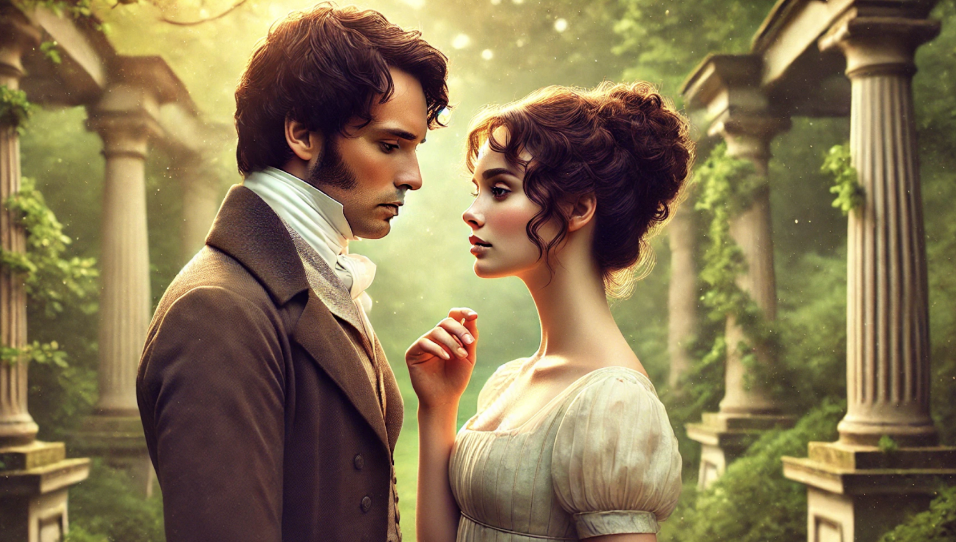What if the secret to living a more passionate life wasn’t about chasing success or stacking up accomplishments, but about embracing the art of connection, creativity, and emotional depth? This is where the Lover archetype comes in. It’s a timeless force that shapes our desire for intimacy, beauty, and authentic self-expression, going beyond just romantic gestures or the pursuit of love (though those are lovely too).
Whether you’ve been swept away by a romantic adventure or found yourself moved by a work of art, it’s this energy that plays a role. It’s that part of us that seeks deep connection, craves meaning, and let’s be honest, can sometimes get lost in the beauty of it all. But it’s not just about romance; this archetype influences our passions, relationships, and even our creative pursuits, encouraging us to live more vibrantly.
In this article, we’ll explore what this powerful force represents, how it shapes our lives, and the Lover archetype examples that bring it to life. Ready to embrace the power of passion? Let’s get started!
What is the Lover Archetype?
This emotionally driven archetype is a symbol that reflects our deep need for connection, passion, and emotional depth. Rooted in Jungian psychology, it represents one of the twelve primary archetypes that influence human behavior. But what is the lover archetype really about?
At its core, the Lover is about experiencing life through love, beauty, and relationships. It’s the part of us that thrives on intimacy—whether with others, in creative endeavors, or our appreciation of the world around us. Unlike the Warrior, who seeks action and conquest, or the Sage, who values wisdom, the Lover is driven by the heart, seeking connection and emotional experiences.
In mythological terms, this archetype is often linked with figures like Aphrodite, the goddess of love, and Eros, the Greek god of desire. These figures show the Lover’s role in connecting us to others and helping us experience life with passion.
It’s important to note that this archetype is not confined to romantic love alone. It can also manifest in our relationships, our artistic pursuits, or even in how we find beauty in the everyday. Understanding it allows us to recognize how love and passion shape the choices we make and how we engage with the world around us.
Key Traits of the Lover Archetype
The Lover archetype is defined by a set of distinct traits that set it apart from other archetypes. At its core, it embodies emotional depth, passion, and an innate desire for connection. But what makes the Lover truly unique are the qualities it brings to every area of life. Here are some of the key traits that define this powerful archetype:
1. Emotional Sensitivity
The Lover is highly attuned to emotions—both their own and others’. They have an innate ability to feel deeply, whether it’s the joy of a beautiful sunset or the sadness in a loved one’s eyes. This emotional sensitivity allows them to connect with the world on a profound level, making their experiences rich and meaningful.
2. Passion and Desire
This archetype thrives on passion. Whether it’s pursuing romantic love, creative endeavors, or personal dreams, they put their heart and soul into everything they do. Their desire is not fleeting; it’s a constant, intense force that drives them to seek out beauty, adventure, and connection in all aspects of life.
3. Intimacy and Connection
Above all, the Lover seeks deep connections with others. They value intimacy—whether emotional, physical, or intellectual—and are often the ones who create bonds that transcend surface-level interactions. For them, relationships are not just about proximity; they’re about truly understanding and sharing experiences with others.
4. Creativity and Self-Expression
Creativity flows through the Lover, often seen in their ability to express themselves through art, music, writing, or even in the way they engage with the world. Their creativity isn’t just a hobby; it’s a form of self-expression that allows them to connect with their inner world and communicate their passions.
5. Appreciation for Beauty
The Lover is a connoisseur of beauty in all its forms. Whether it’s in nature, art, or human connection, they have a heightened appreciation for the aesthetic and sensory pleasures of life. This deep appreciation fuels their desire to live fully and with passion, making every moment feel alive and vibrant.
The Lover Archetype Examples in Real Life
The Lover archetype is not just a theoretical concept—it’s evident in the real world, shaping how we approach relationships, creativity, and personal connections. Whether through historical figures, literary characters, or modern-day inspirations, this archetype brings passion and deep connection into action. Here are some notable real-life examples that showcase this archetype in full force:
1. Romantic Relationships: Elizabeth Bennet and Mr. Darcy (Pride and Prejudice)
In Jane Austen’s beloved novel Pride and Prejudice, the relationship between Elizabeth Bennet and Mr. Darcy is a classic example of the Lover archetype in action. Their evolving relationship is marked by intense emotional growth, connection, and passion. Initially, their connection seems strained, but as they both open their hearts and embrace vulnerability, their love blossoms into one of the most iconic literary romances. Their willingness to challenge their preconceptions and open themselves up emotionally reflects the transformative power of love that defines this archetype.
2. Creative Icons: Frida Kahlo
Frida Kahlo, the renowned Mexican artist, embodies this archetype through her vivid and deeply emotional artwork. Her paintings, many of which reflect her personal suffering, passion, and love, offer a raw glimpse into the artist’s soul. Kahlo’s work is not merely an aesthetic pursuit but an exploration of love, pain, identity, and femininity. The intensity of her emotions is reflected in her art, connecting with both herself and the world in a deeply personal way. For Kahlo, creativity was a form of self-expression, allowing her to connect with others on an emotional level.
3. Modern-Day Example: Maya Angelou
Maya Angelou is a modern-day example of the lover archetype female manifesting in a public figure. As a poet, writer, and civil rights activist, Angelou’s work is fueled by an overwhelming love for humanity and an emotional depth that resonates with people worldwide. Her writing, particularly her memoir I Know Why the Caged Bird Sings, is a powerful testament to her journey through trauma, self-love, and emotional connection. Angelou’s ability to convey the human experience with such passion and vulnerability embodies the essence of the archetype in both her personal life and her art.
4. Personal Growth and Everyday Life: The Compassionate Teacher
The Lover archetype also manifests in everyday heroes, such as the teacher who forms deep, meaningful relationships with their students. Take, for example, educators like Rita Pierson, an influential educator and speaker, who dedicated her life to making deep emotional connections with students, believing in their potential, and nurturing their personal growth. Her ability to create a loving and supportive environment for learning exemplifies how this archetype can shape everyday life. Teachers like Rita Pierson show us that love and passion for others’ growth can be transformative, not just in the classroom but in the world at large.
The Lover Archetype in Women
The archetype manifests in both men and women, but when it comes to women, this energy has its unique expression. Women who embody this energy are often deeply in tune with their emotions, relationships, and passions. They seek connection not only with others but also with their inner selves, creativity, and the world around them. But how does this archetype specifically appear in women? The lover archetype female is characterized by a profound emotional intelligence, enabling them to empathize with and support those they care about. Their love isn’t just romantic; it extends to everyone they connect with, creating lasting, meaningful relationships.
1. Nurturing Relationships
For women who embody this archetype, relationships are central. They have a natural ability to form deep, nurturing bonds with others, whether as partners, friends, or family members. This archetype in women often manifests through a profound emotional intelligence, enabling them to empathize with and support those they care about. Their love isn’t just romantic; it extends to everyone they connect with, creating lasting, meaningful relationships.
2. Empowerment through Self-Expression
Women embodying this archetype often feel empowered when they are free to express themselves authentically, whether through their career, art, or personal endeavors. Whether they’re writing, painting, or pursuing their passion in the workplace, the Lover archetype in women drives them to create, to share, and to connect with the world around them in powerful ways. Creativity becomes a form of liberation, allowing them to express their deepest desires and emotions.
3. Sensuality and Self-Care
Another unique aspect of the Lover archetype in women is the deep connection to their sensuality and self-care practices. These women often embrace their physicality, taking time to appreciate their bodies, enjoy life’s pleasures, and cultivate their well-being. They view sensuality as a source of strength and confidence, understanding that their connection to their own body enhances their ability to connect with others.
4. Balancing Vulnerability and Strength
Women who embrace this archetype often find strength in vulnerability. While this archetype thrives on emotional connection, it doesn’t mean being weak—it’s about the strength that comes from being open, authentic, and deeply connected to one’s emotions. This balance of vulnerability and strength allows them to create powerful, intimate relationships that are rooted in trust and mutual respect.
5. Challenges and Society’s Expectations
While the Lover archetype offers tremendous power and grace, women who embody this archetype often face societal pressures to conform to certain roles. The challenge here is balancing the need for emotional expression and connection with the expectations placed on them by society, which may sometimes undervalue or misinterpret their emotional depth. Embracing this archetype fully means recognizing and navigating these challenges with confidence and authenticity.
Writing the Lover Archetype: Bringing Passion to Life
Writing about this archetype can be an incredibly enriching experience, whether you’re crafting characters, developing personal reflections, or delving into psychological exploration. It’s all about emotion, connection, and passion, which makes it perfect for creating powerful, relatable narratives. Here are some tips on how to bring the Lover archetype to life in your writing:
- Embrace Emotion: This archetype is deeply connected to emotions, so ensure that your writing reflects emotional depth. Whether you’re writing a character or describing an experience, focus on how emotions drive action, decisions, and relationships. Show how the Lover’s desires shape their interactions with the world.
- Use Sensory Details: The Lover is also attuned to sensory experiences—beauty, touch, taste, and sound. Incorporating sensory details in your writing can make your portrayal of the Lover more immersive and vivid. Let your readers feel the passion and connection through descriptions of physical sensations, from the warmth of a touch to the beauty of a landscape.
- Create Deep Connections: Characters or individuals embodying this archetype seek deep, meaningful relationships. Explore how these connections drive the character’s actions and choices, whether love, friendship, or creative bonds. Show how this archetype influences not only romantic interactions but also how characters form bonds in every area of life.
- Focus on Transformation: This archetype is not static—it often leads to personal transformation. Write about the journey of discovery and self-expression. The Lover’s quest for passion and connection often leads them to greater self-awareness and personal growth, so make sure to explore these internal shifts in your writing.
- Explore Conflict and Vulnerability: While the Lover is all about openness, connection, and passion, it is also susceptible to conflict, especially when vulnerability is exploited or when the desire for love is unreciprocated. Don’t shy away from writing about these struggles. Vulnerability can lead to both profound growth and heartache, making it a central theme in writing about the Lover.
Writing about this archetype allows you to delve into the heart of human experience—connection, emotion, and transformation. Whether you’re creating a fictional character or exploring your own life, it provides a rich and multifaceted foundation for powerful storytelling.
Your Publishing Journey Awaits – Start NowFinal Thoughts
The Lover archetype is a powerful force in our lives, shaping how we connect with others, pursue our passions, and embrace the beauty in the world around us. Whether in romantic relationships, creative expression, or deep emotional bonds, it drives us to experience life with passion, authenticity, and emotional depth. By recognizing this energy within ourselves and in the characters we create, we can open the door to more meaningful relationships and a life filled with purpose and fulfillment.
As we’ve seen, this archetype isn’t just about romantic love—it’s about connection, creativity, and the ability to deeply engage with both ourselves and the world. Whether you’re writing a character who embodies it, exploring it in your own life, or using it to bring depth to your storytelling, embracing this energy can help you craft more authentic, emotionally resonant characters and narratives. The Lover’s drive for intimacy, passion, and emotional connection brings richness to any story.
So, whether you’re already channeling the energy of the Lover in your characters or discovering it in your writing for the first time, remember: love and passion are not just for the characters you create—they’re for you, too. Embrace your inner Lover, and watch how it transforms the way you develop characters, write your stories, and engage with the world of creativity.
FAQs – The Lover Archetype
Q1: What is the lover personality type?
The Lover personality type is driven by a deep desire for connection, intimacy, and emotional depth. People who embody this archetype are often passionate, empathetic, and attuned to the needs and feelings of others. They thrive on love and affection, and they value deep, meaningful relationships—whether romantic, familial, or platonic. The Lover archetype also tends to be creative, expressive, and sensitive, making them in tune with beauty and emotional experiences.
Q2: What are the characteristics of the lover archetype?
The Lover archetype is characterized by:
- Emotional depth: Lovers are deeply connected to their emotions and value emotional intimacy.
- Passion: They are passionate in their pursuits, whether it’s love, art, or a cause they believe in.
- Creativity: The Lover often expresses themselves through creative outlets such as art, music, or writing.
- Empathy: They have a natural ability to connect with others and understand their feelings.
- Sensuality: Lovers often seek beauty and pleasure in the world around them, enjoying the sensory experiences of life.
Q3: What is the goal of the lover archetype?
The goal of this archetype is to experience life through love, connection, and emotional fulfillment. Lovers seek to build deep relationships, create beauty, and embrace passion. This archetype is about finding meaning through intimacy, whether with a partner, friends, family, or even in creative pursuits. The Lover also strives to nurture and maintain those connections, seeking harmony and emotional satisfaction.
Q4: What is the ideal lover archetype?
The ideal Lover archetype is someone who balances passion with emotional intelligence. They are open, caring, and attuned to their own and others’ needs. They create deep connections and express their emotions freely and authentically. The ideal Lover isn’t just about romantic love; they also appreciate beauty in the world and pursue creativity with zeal. They embrace vulnerability while maintaining a sense of personal strength and independence.
Q5: What characters fit the lover archetype?
Some famous characters that fit the Lover archetype include:
- Romeo and Juliet: The classic lovers whose intense passion and emotional connection define the archetype.
- Elizabeth Bennet and Mr. Darcy (Pride and Prejudice): Their evolving relationship is driven by emotional depth, personal growth, and genuine love.
- Maya Angelou: A modern-day example of the Lover, expressing love for humanity through her writing and activism.
- Frida Kahlo was a passionate artist who used her art as a means of emotional and personal expression, deeply connected to her own experiences and the world around her.
Q6: What does the lover archetype do?
The Lover archetype seeks to form deep, meaningful connections with others. They thrive on emotional intimacy, whether through romantic relationships, friendships, or family bonds. The Lover also engages in creative pursuits, using art, music, or other forms of self-expression as a way to connect with their inner emotions and the world around them. Ultimately, this archetype is about creating and nurturing relationships that bring joy, meaning, and emotional fulfillment.
Q7: What is an example of the lover archetype in Disney movies?
An example of this archetype in Disney movies is Belle from Beauty and the Beast. Belle is driven by a deep need for connection and understanding. Her love for the Beast transforms him from a creature trapped by his fears and isolation into someone capable of a deep emotional connection. Belle’s passion for books and her ability to see beyond the surface of things mirror this archetype’s desire for meaningful relationships and emotional depth.
Q8: How do you access the lover archetype?
To access this archetype within yourself, start by focusing on your emotional connections and creative passions. Allow yourself to embrace vulnerability and authenticity in your relationships. Seek out experiences that bring you joy, beauty, and connection—whether through art, nature, or love. Engage with others in a meaningful way, and prioritize emotional intimacy. By connecting with your emotions and valuing the people and things that inspire you, you can tap into the energy of the Lover archetype and live a more passionate, fulfilling life.








